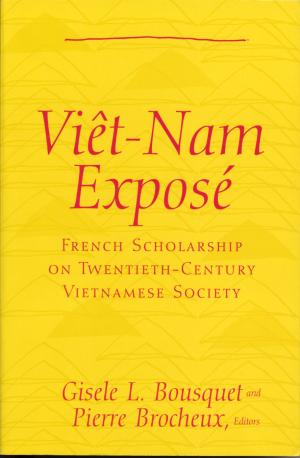Publications
Publications
Contributions
Contributions
[This
paper is translated from french by Duy Tâm.]
Rethinking the Status of Vietnamese Women
in Folklore and oral History

Introduction
When
one takes a close look at Vietnamese society, one may be startled by
the paradoxical status of women: their low social representation or
absence thereof, and their actual place in society, testified by
history and confirmed by legends, or even, their preeminence in some
oral traditions or symbolic representations. Does one not say in
Vietnamese: «When the enemy is at the gate, the woman goes out
fighting» (
Giac den nha dan ba phai danh)? And indeed
they were made to contribute to the war effort against the Americans.
Drawn into the
Thanh Nien Xung Phong (The Committed Youth), hundreds
of thousand of Vietnamese females sacrificed their youth by answering
«aye» to the call of «the Country needs you»,
enrolling and going to the front in order to accomplish the hardest
tasks. A good many of them had not yet had time to savour the taste
of love before falling into the oblivion of history. Those who have
survived and are still alive today, live in such a state of moral and
material abandonment that they often had to form a community within
the community (
viz . a village) to cope with general
indifference .
The history of these women and of this movement is yet to be written. Apart
from a few isolated cases, the existing studies which deal with the
women's issue do not allow a global vision, nor do they trace back
the course of time in order to find out whether their position has
always been the same. Those who envisage to address this question
will inevitably encounter sources-related problems, at least, in so
far as ancient history is concerned. As for the colonial period,
there is proficient material to form a relatively truthful idea of
reality .
It is, for instance, acknowledged that during the '30s, Vietnamese
women, that is, those of the more educated or progressive classes,
began to liberate themselves from the social yoke or family ties,
forcing other social actors to put the issue on the forefront of the
national debate. But the movement was not to be pursued after 1945.
The urgency of the national war of independence set the question
aside and relegated it to a hypothetical agenda. Because
of the paucity of classical sources (be they archives, annals,
miscellanies, memoranda, etc.), which do not dwell much on the
subject whenever they exist, the historian need find other ways and
means. Consequently, oral sources as well as cultural or cult-related
traditions may come of use to fill in the gap. A new way was thus
paved in the 50's by Phan Khôi who took the initiative of
considering language as an historical source .
It is on this most promising path one shall endeavour to follow suit,
dedicating oneself to the roles and the representations of women in
Vietnamese society. In
this respect, the riches of proverbs, sayings and folksongs (
ca
dao) constitute an unequalled and immeasurable stock of
information. We have referred in particular to two collected volumes:
one by Nguyen Van Ngoc, many times re-edited, and whose first edition
dates back to 1926, and the other by Vu Ngoc Phan, which may now be
regarded as a classic of its kind .
As shrewd observers, the Vietnamese describe what they see and feel
through compositions that, albeit succinct, are endowed with rhyming
qualities and much common sense. Every domain of the human activity
is represented in this treasure of the Vietnamese language: therein,
love takes a non-negligible place, humour finds a good terrain,
bawdiness flourishes, morality wages its authority, psychology has
its fair share, social relations are reflected with clarity, the
peasant life is detailed in full? If every period produces its own
linguistic sequence so as to translate the multi-faceted reality,
borrowing foreign words seems to be an essential part of that
process.
Notes
|
Sommaire de la rubrique
|
Haut de page
|
Suite
|









